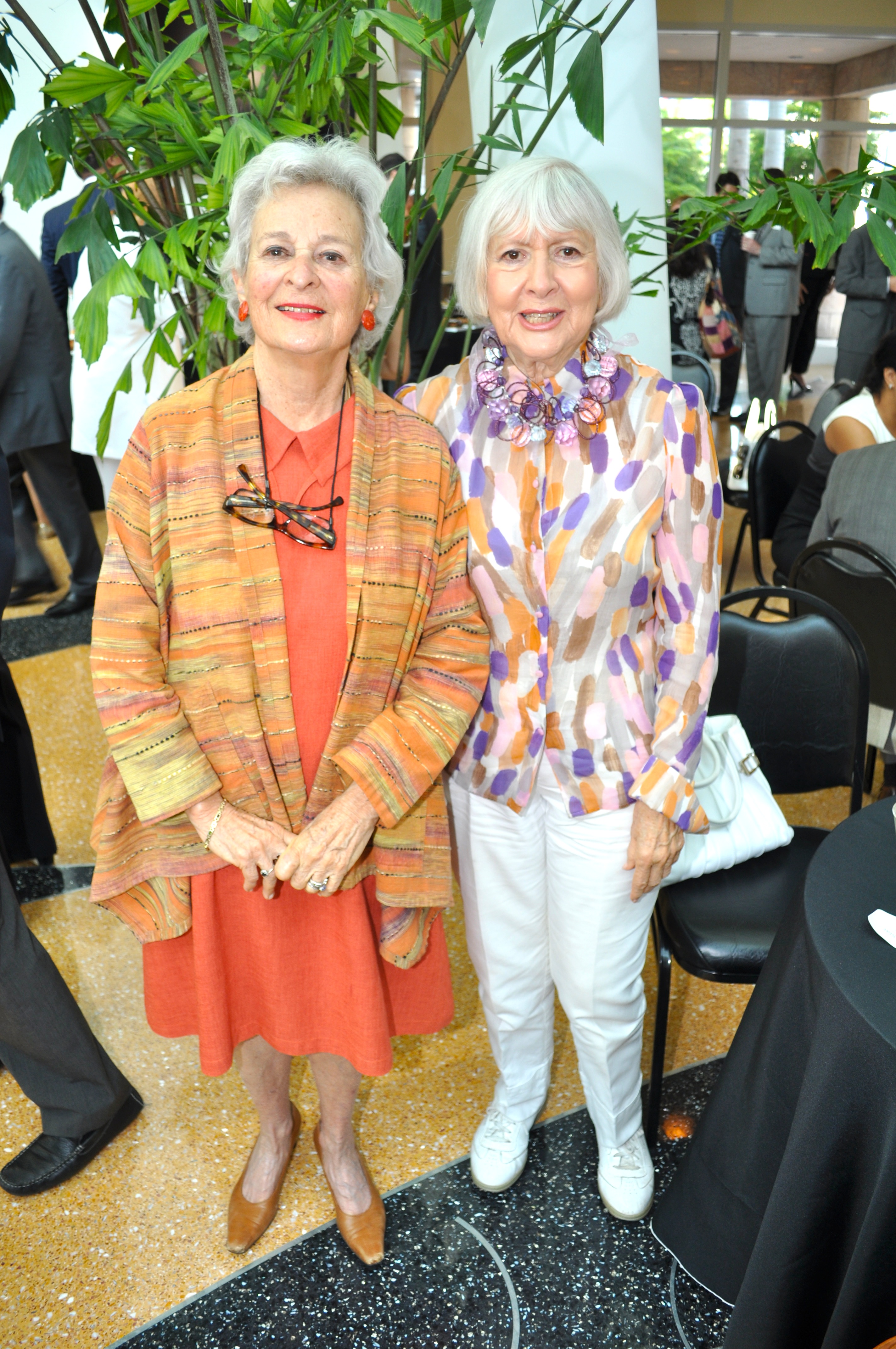
Arsht Awards: Ruth W. Greenfield
Ruth W. Greenfield, recipient of the Parker Thomson Legacy Award, created the first integrated arts school in Miami and changed the city forever.
by Jake Cline
The distance between Miami and Paris has never been just a matter of geography, but in 1949, Ruth Wolkowsky Greenfield discovered that the cities were many miles apart when it came to civil rights. Then in her mid 20s, Greenfield was a Key West-born, Miami-raised and University of Michigan-educated classical pianist who counted among her instructors the composers Mana-Zuca, Artur Schnabel and Nadia Boulanger. In Paris to marry attorney Arnold Greenfield and to continue her studies, Greenfield was surrounded by music. More important, she encountered a culture of equality and acceptance that looked nothing like life back home.
“She saw that the French didn’t care about color,” says Charles Greenfield, the eldest of Ruth Greenfield’s four children. “There were Black musicians everywhere doing jazz and blues. Billie Holiday could go there and sing without any repercussions. That sort of woke her up, because she was a South Florida citizen [who] was now in France in 1949 looking at a culture that accepted people.”
Greenfield, who died in 2023 a few months shy of her 100th birthday, was exhilarated by the idea of a multiracial arts community that prized talent over skin color. She envisioned a South Florida that did the same.
“And then, she brought that back to Miami and hit the brick wall of segregation,” Charles Greenfield says. “And she decided to fight it.”
Almost immediately upon her return home, Greenfield opened a music school in the house she shared with her new husband. It initially had one student: a young Black pianist named James Ford. Word spread about the school, which Greenfield called the Fine Arts Conservatory, and over the next several years, it operated out of a series of venues in Overtown and Liberty City, including a funeral home and a Baptist church.
By the time the not-for-profit conservatory moved into a small house at Northwest Seventh Avenue and Northwest 60th Street, its curriculum had expanded to include dance and visual art. At its peak, about 100 students attended what was one of the few — if not the only — integrated arts schools in the Southeastern United States.
“I was oblivious to the fact that the kids were Black or different colors,” says Charles Greenfield, who attended the school along with his younger siblings. “It just seemed really natural to be in a small room playing or practicing with kids who had a different complexion.”
Outside the conservatory’s walls, however, the iniquity of segregation raged. As a former student observed in the 2013 documentary Instruments of Change, the school was “an island of integration” in Miami, which despite its tropical location functioned much like other racist cities in the Deep South of the 1950s.
For their support of the burgeoning civil rights movement, the Greenfields became pariahs among the city’s white residents. Ruth’s sorority blacklisted her. Onetime friends pulled away from her and her husband, a Harvard Law School graduate whose downtown practice was boycotted. The couple were accused of being communists. “My family was financially affected by it for a number of years,” Charles Greenfield says. “I grew up as a teenager collecting bottle caps from soda bottles so I could go to the movies for free.”

(Ruth W. Greenfield, left, and philanthropist Diane Star Heller at the Adrienne Arsht Center's Knight Concert Hall. Arsht Center file photo.)
The family, of course, was on the correct side of history, and the Fine Arts Conservatory continued until 1978. By then, its curriculum had been adopted by the Dade County public school system. Ruth Greenfield still wanted to do more for Miami. A humanities professor at Miami Dade College since the mid-1960s, she next developed a downtown arts series that some locals believe inspired the creation of the Adrienne Arsht Center.
“You could probably put up an argument that the Arsht Center is a result of the Lunchtime Lively Arts Series,” Timothy Schmand, then executive director of Bayfront Park Management Trust, says in Instruments of Change. “I know that the Arsht Center is certainly a reflection of the commitment to the arts by a group of people back in the ’80s that resulted in what we have downtown today.”
The Lunchtime Lively Arts Series, which Greenfield created with then Miami Dade College president Eduardo Padrón, presented midday concerts and other events for people who worked downtown. Admission was free, and performers included the Peking Acrobats and composer Philip Glass, who reportedly made his Florida concert debut at the series. An early-evening spinoff series attracted commuters who wanted to wait out rush hour. Another Greenfield-created series, the Lively Word, brought writers such as Isaac Bashevis Singer, Bernard Malamud and Gwendolyn Brooks to the college’s campus and is considered a precursor to the long-running Miami Book Fair.
Marshall L. Davis, recipient of the inaugural Arsht Education Champion Award, met Greenfield when he was an art student and again after he became a professional educator. He says his first wife and her sister attended the Fine Arts Conservatory.
“Ruth Greenfield was amazing, a very kindhearted, good-spirited person,” Davis says. “I had a chance one time to go to her home, and we talked about her experience working with kids in the arts.”
Charles Greenfield says his mother would have accepted the Parker Thomson Legacy Award with a great deal of modesty and humor. “My mother’s typical answer would be, ‘Oh, there are so many other people who are so worthy of this prize.' That would have been her typical answer — slightly self-deprecating and with a big smile,” he says. “She was extremely determined, but she felt uncomfortable receiving praise. And yet she deserved it. It was a strange sort of territory she lived in, where she appreciated it underneath all that self-deprecation.”
(Top: Photo of Ruth W. Greenfield by Timothy Greenfield-Sanders.)



